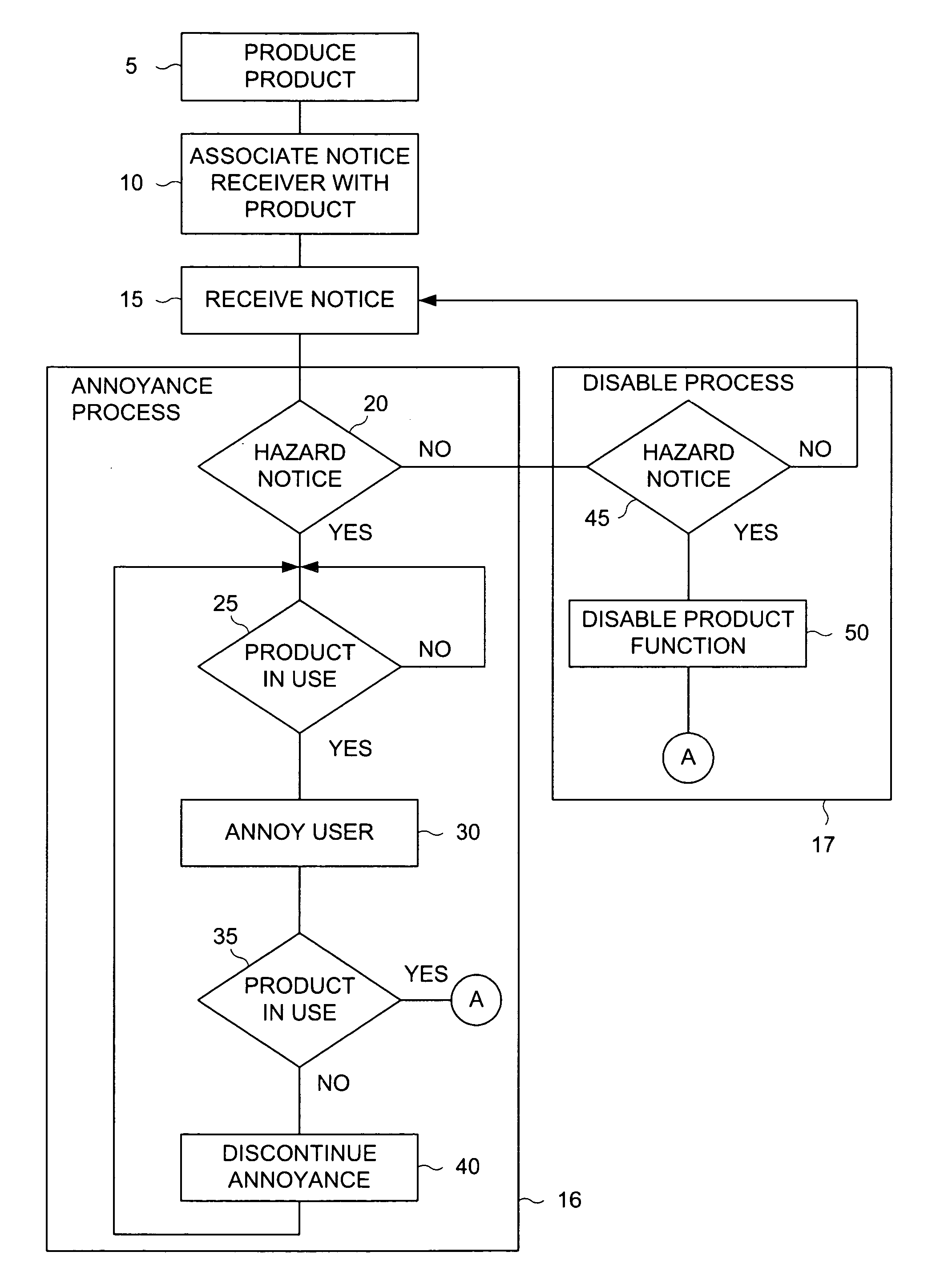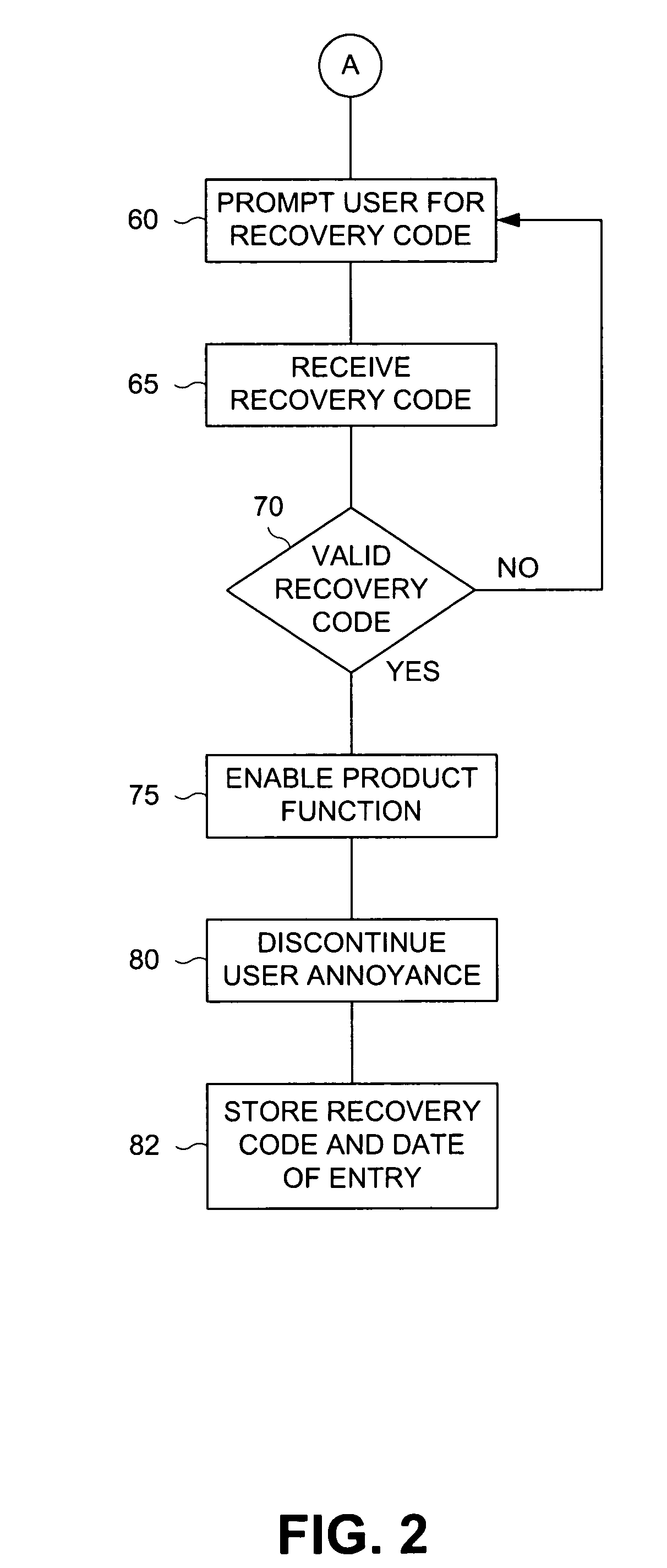Method and apparatus for product-centric delivery of product user notices
- Summary
- Abstract
- Description
- Claims
- Application Information
AI Technical Summary
Problems solved by technology
Method used
Image
Examples
Embodiment Construction
[0024] What is needed is a means for delivering a product notice to a user that is not user-centric. According to the present invention, product notices are issued not to the user, but to a device associated with the product. This device is then used to present a product notice to a potential user. The present invention comprises a method for delivering "product-centric" notices to potential product users.
[0025] FIG. 1 is a flow diagram that depicts one example method for delivering user notices to potential product users according to the method of the present invention. According to one illustrative method, product user notices are delivered by producing a product (step 5) and then associating a notice receiver (step 10) with that particular product. According to one variation of the present method, a notice receiver is integrated with the product resulting in a single product assembly including the normal functionality of the product and the notice receiver. According to one alter...
PUM
 Login to View More
Login to View More Abstract
Description
Claims
Application Information
 Login to View More
Login to View More - R&D
- Intellectual Property
- Life Sciences
- Materials
- Tech Scout
- Unparalleled Data Quality
- Higher Quality Content
- 60% Fewer Hallucinations
Browse by: Latest US Patents, China's latest patents, Technical Efficacy Thesaurus, Application Domain, Technology Topic, Popular Technical Reports.
© 2025 PatSnap. All rights reserved.Legal|Privacy policy|Modern Slavery Act Transparency Statement|Sitemap|About US| Contact US: help@patsnap.com



